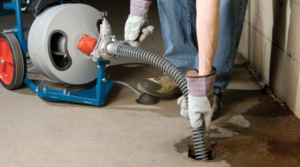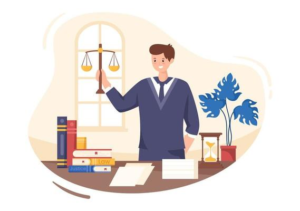Lawyers are legal professionals who provide clients with guidance through the complexities of the legal system. They interpret laws, research and prepare legal documents, and represent their clients in court proceedings.
Lawyer careers can be demanding but rewarding professional endeavors. Becoming a lawyer is lengthy, requiring rigorous academic preparation and passing the bar exam. Click Here to learn more.

Lawyers work with various individuals, businesses, and government agencies to provide legal advice and services. They often specialize in specific legal disciplines, allowing them to develop in-depth knowledge and expertise to help them tackle the complexities of their clients’ cases. Lawyers may also have a broader practice, with responsibilities that include defending individual rights, shaping public policy, and more. The career of a lawyer can be challenging, but it can also be rewarding.
Getting into the field of law can be extremely competitive, even for students at the top of their class at prestigious law schools. The competition to make partner at large law firms or in-house counsel positions in corporations can be fierce, and many attorneys struggle to reach these lofty heights of their profession. As a result, some lawyers choose to pursue alternative careers that allow them to use their skills and knowledge in a more manageable manner.
Attorneys who are looking for a more traditional career path can find success in the world of banking. The experience and training they have gained in the legal field can be beneficial to their career as bankers, allowing them to provide advice and guidance on various financial issues for their clients.
Another potential alternative career for lawyers is that of an author. This career option enables attorneys to utilize their writing skills in a meaningful way while also exploring their creativity and passion for the world around them. The research and analytical skills they developed while studying law are ideal for this type of creative writing, which can be used to create content for blogs, magazines or books.
For those who are interested in pursuing a more hands-on career, becoming a hearing officer is an excellent choice. These professionals conduct hearings for cases related to government programs and must be able to assess the evidence that has been presented in court. They also help to determine whether a particular party should be held liable and what penalties should apply in certain situations. This career requires a great deal of physical activity and a good working knowledge of the laws and regulations that govern the nation’s finances.
Education and Training
A lawyer’s job involves more than arguing in court. It also includes advising businesses on compliance and risk management, developing training for employees and customers, and preparing policies and procedures to protect companies from legal liabilities. Lawyers also advise individuals and families on personal issues such as estate planning, divorce and custody.
Continuing education and professional development are important for lawyers to stay abreast of changes in laws, regulations and legal precedent. This is particularly important for lawyers who specialize in complex or high-stakes cases. Some lawyers even teach or lecture as adjunct faculty members in law schools and community colleges to keep up with the latest developments in their practice areas.
Lawyers also have a responsibility to advance the public interest by promoting social justice and protecting the rights of people and communities. They often devote their time and resources to pro bono work or volunteer in public service projects. In addition, lawyers must uphold ethical standards and ensure the public that they are providing honest, competent and professional services to their clients.
One of the biggest challenges faced by lawyers is balancing work and life. Long hours, evening and weekend meetings, and frequent travel can take a toll on personal relationships, health and well-being. Additionally, a lawyer’s work can be emotionally challenging as they may have to deal with contentious legal disputes or sensitive client matters that involve human suffering.
Lawyers are governed by ethical standards and professional conduct rules established by their state bar associations. In addition, they are required to maintain confidentiality and avoid conflicts of interest. Many lawyers participate in pro bono activities or public service initiatives, which can help them gain a broader perspective on the world and the issues that face it. They must also adhere to attorney-client privilege, which keeps all communications between a lawyer and his or her client private and unusable in court proceedings. Lawyers are also expected to maintain their licenses and continue their legal education by completing a certain number of Continuing Legal Education (CLE) courses each year. CLE courses provide a platform for lawyers to exchange ideas, discuss current trends and challenges in their fields, and develop professionally.
Skills and Knowledge
In addition to a thorough knowledge of the law, Lawyers must also have the ability to think creatively and problem-solve. This is a skill that can be honed through work experience, such as taking on internships or participating in legal clinics. Extra-curricular activities such as debating or public speaking societies are another way to develop this, as well as community service or student ambassadorship roles – these opportunities offer hands-on, relevant experience in a professional setting while still at school or university.
Another essential skill for Lawyers to have is emotional intelligence (EI). This is because the ability to understand and manage people’s emotions is a key component of client service and effective communication. It’s also useful when it comes to negotiating and providing tailored legal solutions.
Being able to work under pressure is a necessity in this role, as is being able to meet deadlines. This is especially true for the more senior Lawyers who may be overseeing teams of junior associates or even a whole department.
Having the ability to research effectively is important for any Lawyer, whether they are researching legislation or precedents, or gathering information about a particular case. This can be done through a variety of resources, including statutory and case law sources; constitutions, treaties and legislative acts; journals and academic literature; news articles; and colleagues with first-hand experience or knowledge. It’s also important for Lawyers to be comfortable using technology, particularly in the context of modern digital workplaces and processes.
The ability to create tailored legal solutions is a critical skill for Lawyers to have, as they will often be working with complex and unique issues. Creating these tailored solutions is often a matter of identifying the best course of action for a client, which requires a creative approach and strong persuasion skills.
Being a Lawyer isn’t for the faint of heart – it can be very challenging at times. It’s therefore essential to be able to work well as part of a team, but also to be able to take the lead when necessary. This is especially important when delivering presentations, representing clients in court, or negotiating with colleagues.
Work Environment
Creating a work environment that aligns with lawyers’ individual work values and supports their personal lives enhances job satisfaction. For example, if an attorney strives for professional excellence and prioritizes cooperative problem-solving, her firm may encourage her to take time off from work when she feels stressed or needs to focus on her family. This type of flexible schedule is likely to attract qualified candidates, improve job satisfaction, and enhance productivity for the firm as a whole.
However, if a lawyer works at a firm that places heavy emphasis on meeting billable hour requirements and encourages a culture of presenteeism, she is less likely to enjoy her work. In this environment, the stress of trying to meet quotas and the inability to separate her private life from her professional career may contribute to burnout. This type of negative work environment is likely to discourage new hires, drive a high turnover rate, and contribute to declining client service.
Law firms that prioritize core values, open communication, work-life balance, professional development and recognition help foster a positive work environment for their attorneys. During the hiring process, these firms assess soft skills and cultural fit in addition to educational backgrounds and legal experience. As a result, the firm’s recruitment and retention efforts are more effective at finding talented candidates who can thrive in the organization.
In addition, if a lawyer experiences harassment or discrimination based on any protected traits or characteristics under anti-discrimination laws such as age, gender, race or disability, the firm should address this issue promptly and thoroughly. These types of incidents can be extremely detrimental to the career satisfaction of a lawyer and should never be tolerated.
To overcome an “always on” culture, the legal profession should create a supportive work environment that prioritizes well-being, encourages healthy boundaries and discourages excessive overtime. This can be accomplished by streamlining workflows and eliminating unnecessary work tasks, encouraging collaborative working relationships, providing training on time management tools and productivity techniques and discouraging competitive billable hour competition. It is also important to set realistic deadlines and expectations and provide clear routes for addressing issues of dissatisfaction.




